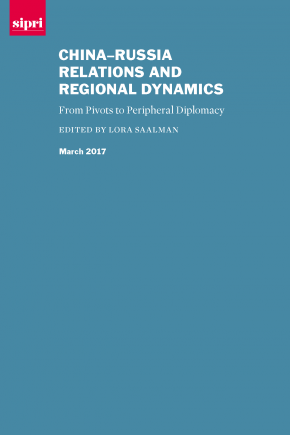China–Russia Relations and Regional Dynamics: From Pivots to Peripheral Diplomacy

The annexation of the Crimean Peninsula by Russia and the onset of armed conflict in eastern Ukraine are often attributed with fostering a new security dynamic in Europe and Asia. Given the crisis, a variety of analysts have argued that Russia has sought to accelerate its own ‘pivot to Asia’ (Поворот к Азии) and to deepen its evolving engagement with China. Using a similar logic, experts also describe how China’s territorial concerns have triggered its own ‘peripheral diplomacy’ (周边外交) and reprioritization of its relations with its neighbours. Yet, these changes have been more gradual and nuanced than such analyses suggest.
The report ‘China–Russia Relations and Regional Dynamics: From Pivots to Peripheral Diplomacy’ contains case studies from 27 experts from 13 countries. Over two days in January 2017, these experts assembled at a workshop of over 70 participants to discuss their research and analyses on China and Russia in both non-traditional and traditional security domains. From development to deterrence, these experts covered a broad range of issues impacting China–Russia rapprochement and regional engagement. By turning China and Russia from the subjects into the objects of inquiry, this report explores how regional actors view the impact of Chinese and Russian activities on their strategic domains in North East Asia, South East Asia, South Asia, Central Asia and Europe.
1. Introduction
2. Redefining Russia’s Pivot and China’s Peripheral Diplomacy
3. The Belt and Road Initiatives and New Geopolitical Realities
4. Eurasian Economic Union Policies and Practice in Kyrgyzstan (pdf)
5. Balancing Resource Expectations in the Russian Far East and Belarus (pdf)
6. Patterns of and Incentives for Entry into the Arctic and South East Asia (pdf)
7. Shifting Concepts of Territory and their Impact on the South China Sea
8. New Domains of Crossover and Concern in Cyberspace (pdf)
9. Creating Frameworks to Confront Terrorism in Central Asia
10. Exploring Security Engagement with Pakistan and Afghanistan
11. Impact of Shifts in Arms Trade and Exercises on South Asia and Europe (pdf)
12. Nuclear Modernization and Changing Postures on Escalation
13. Calculus on Missile Defence and Hypersonic Glide (pdf)
14. Conclusions







